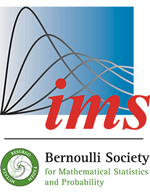Abstract
Modeled along the truncated approach in [20], selection-adjusted inference in a Bayesian regime is based on a selective posterior. Such a posterior is determined together by a generative model imposed on data and the selection event that enforces a truncation on the assumed law. The effective difference between the selective posterior and the usual Bayesian framework is reflected in the use of a truncated likelihood. The normalizer of the truncated law in the adjusted framework is the probability of the selection event; this typically lacks a closed form expression leading to the computational bottleneck in sampling from such a posterior. The current work provides an optimization problem that approximates the otherwise intractable selective posterior and leads to scalable methods that give valid post-selective Bayesian inference. The selection procedures are posed as data-queries that solve a randomized version of a convex learning program which have the advantage of preserving more left-over information for inference.
We propose a randomization scheme under which the approximating optimization has separable constraints that result in a partially separable objective in lower dimensions for many commonly used selective queries. We show that the proposed optimization gives a valid exponential rate of decay for the selection probability on a large deviation scale under a Gaussian randomization scheme. On the implementation side, we offer a primal-dual method to solve the optimization problem leading to an approximate posterior; this allows us to exploit the usual merits of a Bayesian machinery in both low and high dimensional regimes when the underlying signal is effectively sparse. We show that the adjusted estimates empirically demonstrate better frequentist properties in comparison to the unadjusted estimates based on the usual posterior, when applied to a wide range of constrained, convex data queries.
Citation
Snigdha Panigrahi. Jonathan Taylor. "Scalable methods for Bayesian selective inference." Electron. J. Statist. 12 (2) 2355 - 2400, 2018. https://doi.org/10.1214/18-EJS1452





